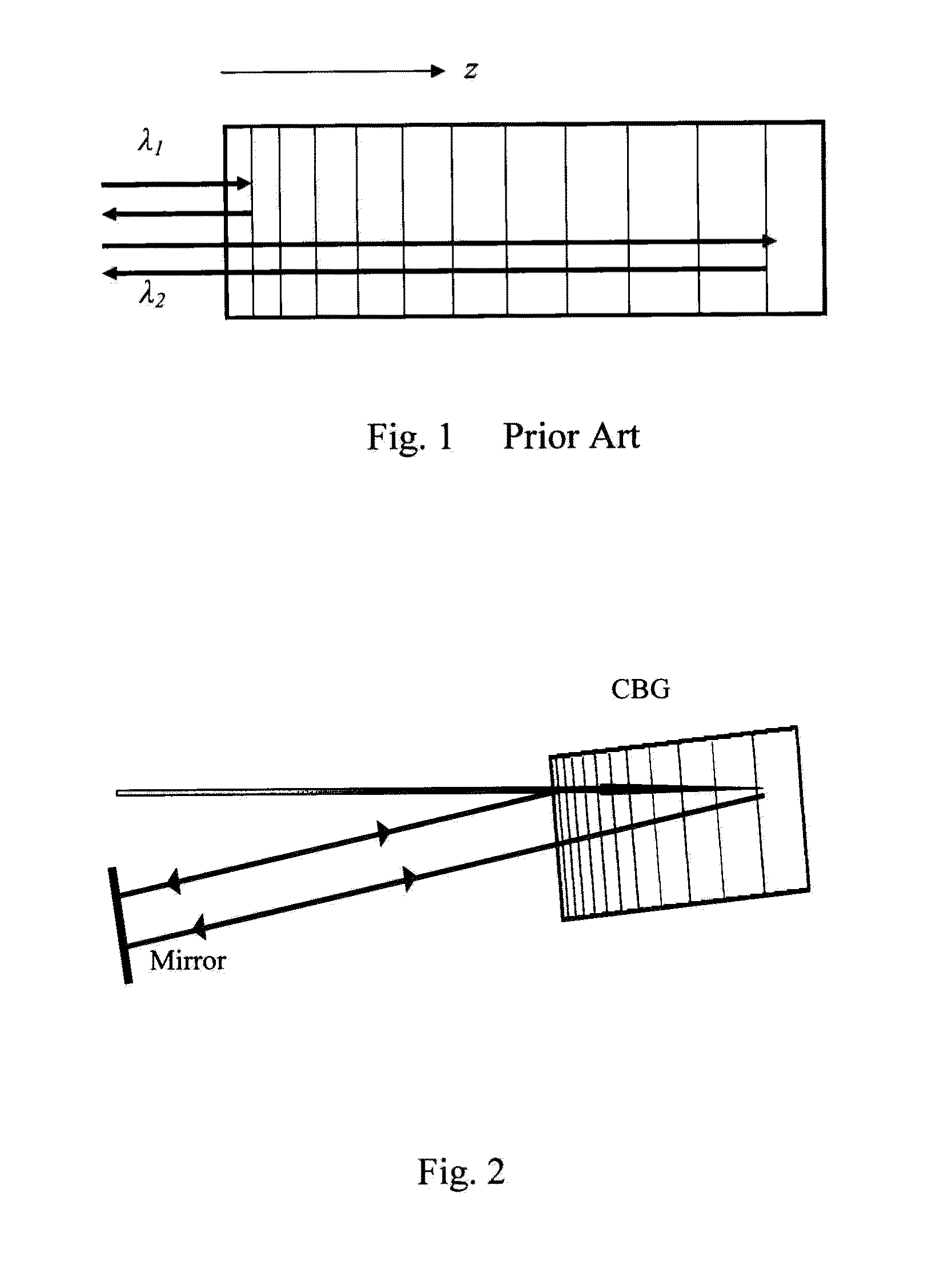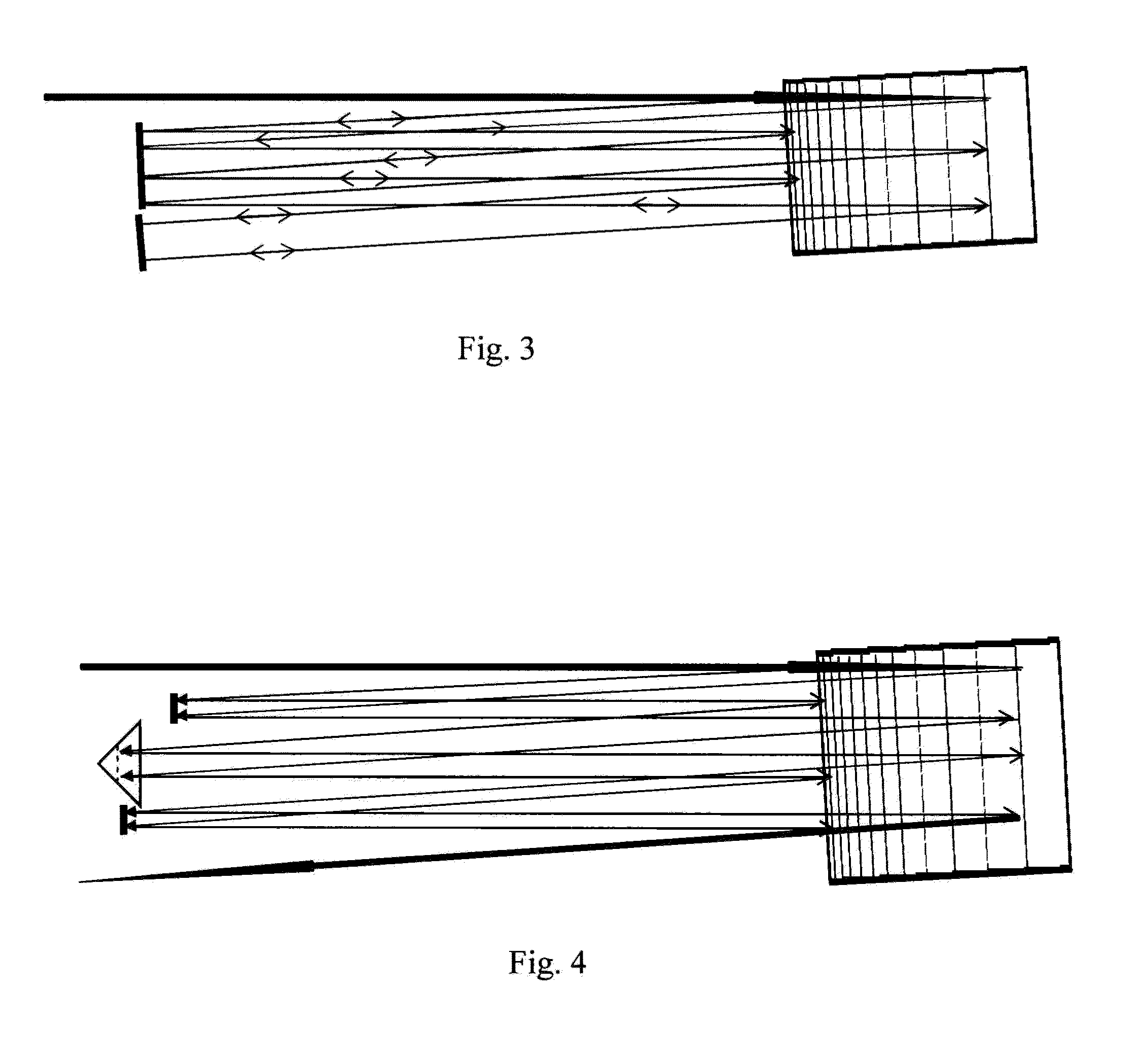Laser pulse temporal, spectral and spatial shaping devices based on volume diffractive gratings with spatially variable parameters
a technology of spatial parameter and spectral parameter, applied in the field of laser systems, can solve the problems of reducing the delay time, affecting the accuracy of the delay time, so as to achieve the effect of increasing the delay tim
- Summary
- Abstract
- Description
- Claims
- Application Information
AI Technical Summary
Benefits of technology
Problems solved by technology
Method used
Image
Examples
Embodiment Construction
[0056]Before explaining the disclosed embodiments of the present invention in detail it is to be understood that the invention is not limited in its application to the details of the particular arrangements shown since the invention is capable of other embodiments. Also, the terminology used herein is for the purpose of description and not of limitation.
[0057]The main restriction to generating high-power, high-energy, extremely short laser pulses is the appearance of nonlinear processes in laser amplifiers, including laser induced breakdown. The main approach to mitigate the problem is to stretch an original pulse before final amplification and then compress it back after amplification, referred to as chirped pulse amplification (CPA).
[0058]The recent inventions of volume Bragg gratings with variable period (volume longitudinally chirped Bragg gratings in photo-thermo-refractive (PTR) glass has dramatically changed the design of high power femtosecond lasers. Replacing of bulky pair...
PUM
| Property | Measurement | Unit |
|---|---|---|
| thick | aaaaa | aaaaa |
| FWHM | aaaaa | aaaaa |
| FWHM bandwidth | aaaaa | aaaaa |
Abstract
Description
Claims
Application Information
 Login to View More
Login to View More - R&D
- Intellectual Property
- Life Sciences
- Materials
- Tech Scout
- Unparalleled Data Quality
- Higher Quality Content
- 60% Fewer Hallucinations
Browse by: Latest US Patents, China's latest patents, Technical Efficacy Thesaurus, Application Domain, Technology Topic, Popular Technical Reports.
© 2025 PatSnap. All rights reserved.Legal|Privacy policy|Modern Slavery Act Transparency Statement|Sitemap|About US| Contact US: help@patsnap.com



